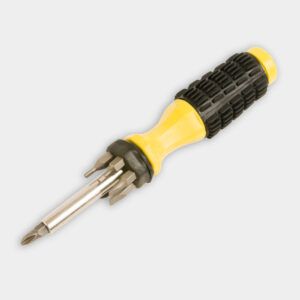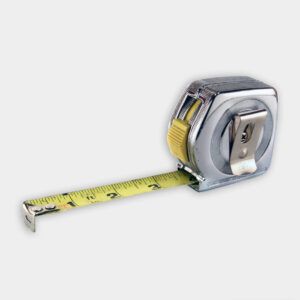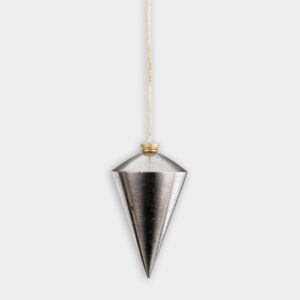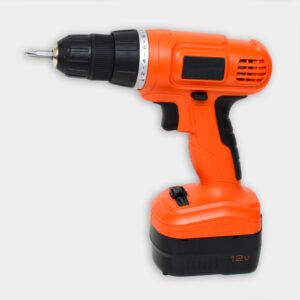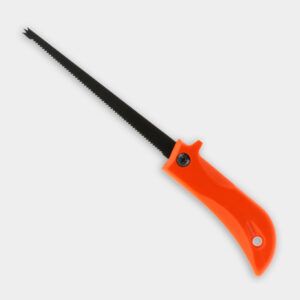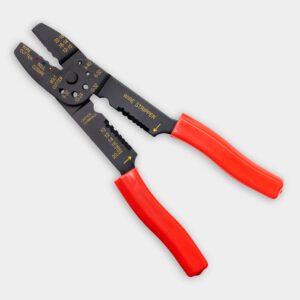Project details
Skill
Cost
Estimated Time
Master electrician, Heath Eastman takes us on a house call to help a homeowner move a light over their dining room table. After assessing the situation and getting some careful measurements, the two move the table, shut off the breaker and get to work moving the light fixture.
How to Move a Light Fixture
Note: This technique works when moving a light fixture closer to the light switch, as there should already be enough wire in the ceiling to reach the new fixture. When the situation calls for moving the fixture away from the switch, it may be necessary to use the existing light’s electrical box as a junction box, add more wire to reach the new location, and then cover the box with a blank cover plate.
- Locate the switch that runs to the light fixture. Be sure to shut the breaker off and test the switch and fixture with the non-contact tester to ensure it’s off.
- Use the tape measure to position the table in the desired position within the room. Place a piece of painter’s tape on the table in its center. Measure the length and width of the table and mark the exact center on the tape. Use a plumb bob or laser level with a plumb setting to transfer the mark to the ceiling.
- Create a small hole by pushing the screwdriver through the ceiling at the mark. Use a test bit bent at 2 1/2 inches to test for pipes, blocking, and other obstructions to ensure there is room for the new fixture.
- Remove the existing light fixture from the ceiling. Remove the old electrical box and pull the wires out from the back of the box.
- Use a 4-inch hole saw or a keyhole saw to cut through the ceiling. Carefully reach inside the ceiling to ensure there is enough room for the electrical box. Also, feel for the wire and pull it down through the new hole.
- Place a fan brace inside the hole and adjust it so it’s centered and snug against the joists. Install the electrical box bracket over the brace and attach the new electrical box to the brace.
- Remove a knockout from the electrical box and place a wire connector entry into the hole. Slide the wire through the back of the box and place it in the opening. Secure it to the fan brace bracket.
- Mount the fixture bar to the electrical box and adjust the height of the canopy so it fits flush against the ceiling.
- Remove a link from the fixture’s chain and hang it on the fixture bar. Hang the light fixture from the chain until it’s sitting at the desired height, close the link, and remove the excess chain.
- Weave the fixture’s wires through the chain (and canopy) and up through the center of the fixture bar. Wrap the ground wire around the green screw and tighten it down. Strip the two fixture wires back about 1/2 inch and connect them to the switch wire using wire nuts. Install the canopy. In most cases, the identified wire (the one with the ribbed texture) connects to the white wire, while the smooth wire connects to the black wire.
- Finish the installation by installing the canopy and flipping on the breaker.
Resources
Heath moves a kitchen ceiling light fixture 12-18 inches to center it over a kitchen table. He uses a small metal rod (about 16 inches long), pushes it through the ceiling, and bends it to a 90-degree angle, so there is about 2 inches of bent wire through the ceiling. Heath says by rotating the rod around 360 degrees without hitting anything, he knows he can freely work in that section of the ceiling.
Once Heath determines that the new location is free of obstacles, he drills a hole using a dust collector, and a 4-inch hole saw. After Heath detaches the fixture, he removes the old electrical box from the ceiling, freeing up the wire. After Heath installs the appropriate junction box and runs the wiring through it, he installs the new light fixture.
Materials
- Painter’s tape
- Pencil
- Wire test bit
- Fan brace
- Electrical box
- Wire connector
- Chandelier light fixture
- Hardware (including wire nuts)

